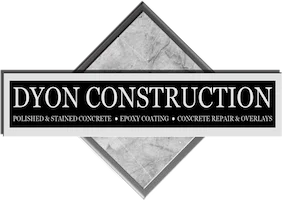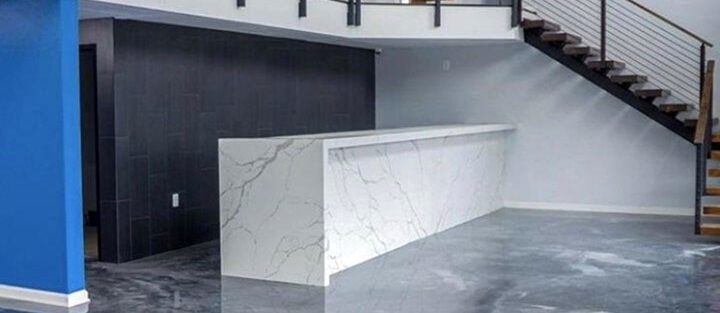Introduction
Selecting the right flooring for your space is a crucial decision that impacts both aesthetics and functionality. Among the many options available, epoxy flooring stands out for its durability and versatility. Within this category, you can choose between metallic epoxy and standard epoxy. Both have unique features and benefits that cater to different needs and preferences. This article explores the differences between metallic epoxy and standard epoxy, providing insights to help you make an informed choice.
Overview of Metallic Epoxy
Metallic epoxy is a premium flooring option known for its stunning, three-dimensional effects and high-gloss finish. This type of epoxy contains metallic pigments that create a shimmering, pearlescent effect as they flow through the epoxy during application. The result is a unique, marbled look that can mimic the appearance of polished stone, molten metal, or flowing water. The application process for metallic epoxy is more complex than standard epoxy, often requiring multiple layers and specialized techniques to achieve the desired visual effects.
Overview of Standard Epoxy
Standard epoxy is a robust and versatile flooring solution that has been widely used in both residential and commercial settings for decades. It consists of a resin and hardener that, when mixed together, form a rigid, durable coating. Standard epoxy can be applied in various thicknesses and finishes, ranging from matte to high gloss. It is available in a wide range of colors and can incorporate decorative flakes or quartz aggregates for added texture and visual interest. Standard epoxy is known for its strong adhesion, chemical resistance, and ability to withstand heavy foot and vehicular traffic.
Pros and Cons of Metallic Epoxy
Pros
The primary appeal of metallic epoxy lies in its aesthetics. The striking visual effects can transform ordinary floors into stunning, eye-catching surfaces. Each application is unique, offering a level of customization that is unmatched by other flooring options. Metallic epoxy is also highly durable, resistant to chemicals, stains, and abrasions, making it suitable for high-traffic areas. Its seamless finish is easy to clean and maintain, contributing to its long-lasting appeal.
Cons
However, metallic epoxy comes with certain drawbacks. The application process is more complex and time-consuming than standard epoxy, often requiring professional installation to achieve the desired effect. This complexity translates to higher labor costs. Additionally, metallic epoxy can be more expensive due to the specialized pigments and multiple layers required. While durable, it can be prone to scratches and scuffs, particularly in high-traffic areas, necessitating regular maintenance to preserve its appearance.
Pros and Cons of Standard Epoxy
Pros
Standard epoxy flooring is prized for its durability and versatility. It provides a strong, long-lasting surface that can withstand heavy use, making it ideal for industrial, commercial, and residential applications. The installation process is relatively straightforward, often allowing for DIY projects. Standard epoxy is available in a wide range of colors and finishes, allowing for extensive customization. It is also resistant to chemicals, stains, and impacts, ensuring a durable and low-maintenance flooring solution.
Cons
Despite its many advantages, standard epoxy has some limitations. While it is available in various colors and can incorporate decorative elements, it lacks the unique visual appeal of metallic epoxy. Over time, standard epoxy can become yellowed or discolored, particularly when exposed to UV light. Additionally, although it is durable, it can be prone to chipping or cracking if the underlying concrete is not properly prepared or if it is subjected to extreme conditions. Regular maintenance, such as resealing, may be necessary to keep the surface looking its best.
Cost Comparison
When it comes to cost, standard epoxy is generally more affordable than metallic epoxy. The simpler application process and lower material costs contribute to its cost-effectiveness. Standard epoxy flooring typically ranges from $3 to $7 per square foot, depending on the quality of the materials and the complexity of the installation.
Metallic epoxy, on the other hand, tends to be more expensive due to the specialized pigments, multiple layers, and intricate application techniques required. The cost of metallic epoxy flooring can range from $8 to $12 per square foot or more, depending on the desired effects and the complexity of the project. While the initial investment is higher, the unique aesthetics and potential to increase property value can justify the cost for many homeowners and businesses.
Aesthetic Differences
The aesthetic differences between metallic epoxy and standard epoxy are striking. Metallic epoxy offers a high-gloss, three-dimensional finish that can create dramatic, artistic effects. The flowing patterns and shimmering metallic pigments provide a sense of depth and movement, making each floor a one-of-a-kind masterpiece. This type of flooring is often chosen for its ability to make a bold statement and enhance the visual appeal of a space.
In contrast, standard epoxy offers a more traditional look, with a range of solid colors and finishes that can be customized to suit various design preferences. Decorative flakes or quartz aggregates can be added to create texture and visual interest, but the overall effect is more understated compared to metallic epoxy. Standard epoxy is often chosen for its practicality and ability to blend seamlessly with a wide range of interior styles.
Ideal Applications for Each
Metallic epoxy is ideal for spaces where aesthetics are a top priority and a dramatic visual impact is desired. It is often used in high-end residential interiors, showrooms, retail spaces, and commercial environments where a unique, eye-catching floor can enhance the overall design. The luxurious finish of metallic epoxy can also add value to properties, making it a worthwhile investment for those looking to create a distinctive and memorable space.
Standard epoxy is well-suited for a wide range of applications due to its durability and versatility. It is commonly used in garages, basements, workshops, warehouses, and commercial settings where a robust, low-maintenance floor is essential. The ability to customize the color and finish allows standard epoxy to be tailored to different functional and aesthetic requirements, making it a practical choice for both residential and commercial environments.
Conclusion
Choosing between metallic epoxy and standard epoxy flooring depends on your specific needs, budget, and design preferences. Metallic epoxy offers unparalleled aesthetic appeal and customization options, making it ideal for spaces where visual impact is paramount. Standard epoxy provides a durable, versatile, and cost-effective flooring solution suitable for a wide range of applications. By carefully considering the pros and cons of each option, you can select the best flooring solution to enhance and protect your space for years to come.

